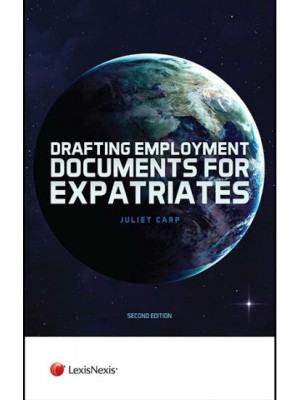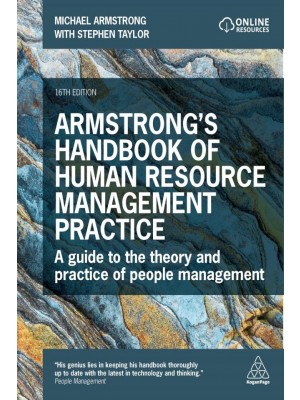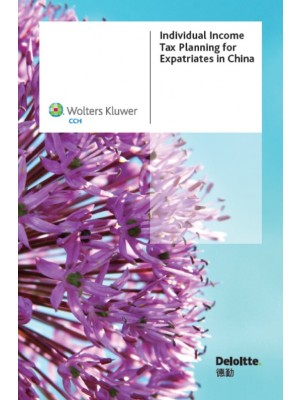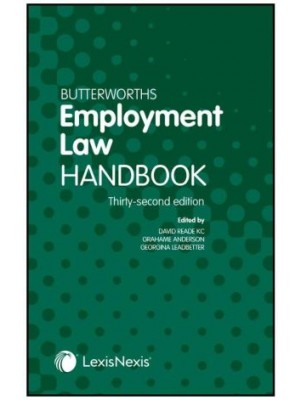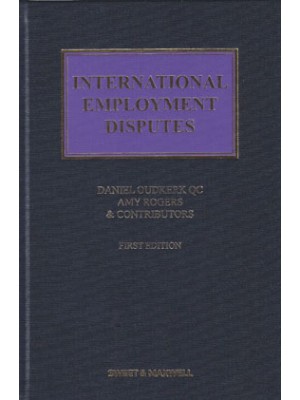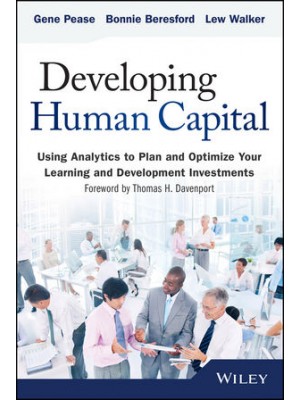Preface xv
Acknowledgments xxiii
Introduction xxv
CHAPTER 1 Functions and Forms of Banking 1
1.1 Banks and Banking 2
1.1.1 Core Bank Services 2
1.1.2 Banks in the Economy 4
1.1.3 Money Creation 5
1.1.4 Payment Services 8
1.1.5 Other Banking Services 8
1.2 Different Bank Types 10
1.2.1 Retail Banks 10
1.2.2 Wholesale Banks 11
1.2.3 Bank Holding Companies 12
1.2.4 Cooperative Banks 13
1.2.5 Credit Unions 14
1.2.6 Micro-finance Institutions 14
1.2.7 Central Banks 15
1.3 Banking Risks 16
1.3.1 Credit Risk 18
1.3.2 Market Risk 19
1.3.3 Operational Risk 23
1.3.4 Liquidity Risk 24
1.3.5 Systemic Risk 24
1.3.6 Other Risks That Banks Face 25
1.4 Forces Shaping the Banking Industry 27
CHAPTER 2 Managing Banks 31
2.1 Balance Sheet and Income Statement 32
2.1.1 Bank Assets 32
2.1.2 Bank Liabilities 34
2.1.3 Equity 35
2.1.4 Income Statement 36
2.1.5 The Role of Bank’s Equity 39
2.2 Loan Losses 43
2.2.1 Valuing Assets in the Trading Book 44
2.2.2 Value of Assets in the Banking Book, Performing Loans 45
2.2.3 Value of Assets in the Banking Book, Non-performing Loans 46
2.2.4 Provision for Loan Losses and Loan Loss Reserves 48
2.2.5 Loan Loss Reserves and Loan Losses 49
2.3 Asset and Liability Management 54
2.3.1 Interest Rate Risk 54
2.3.2 Liquidity Risk 56
2.3.3 Liquidity Standards in Basel III 60
2.4 Corporate Governance 61
2.4.1 Corporate Governance Structures 61
2.4.2 Corporate Governance Techniques 64
2.4.3 Senior Management and Corporate Strategies 65
2.4.4 Values and Culture 65
2.4.5 Financial Incentives 66
2.4.6 Internal and External Auditors 66
2.4.7 Transparency 66
CHAPTER 3 Banking Regulation 69
3.1 The Evolution of Risk Regulation in Banking 70
3.1.1 Why Banks Are Special and Need to Be Regulated 71
3.1.2 Liquidity Crises and Bank Runs 71
3.1.3 Bank Panics 73
3.2 Foundations of Bank Regulation 76
3.2.1 Regulatory Objectives 77
3.2.2 The Regulatory Process 77
3.2.3 Stabilization: The Lender of Last Resort 78
3.3 International Regulation of Bank Risks 80
3.3.1 Bank for International Settlements 80
3.3.2 The Basel Committee 82
3.3.3 The Basel I Accord 83
3.3.4 The Market Risk Amendment 86
3.3.5 Weaknesses of Bank Capital Requirements in Basel I Accord 87
3.3.6 The Basel II Accord 88
3.3.7 Adopting Basel II 90
3.3.8 Limitations of Basel II 91
3.3.9 The Basel III Accord 92
3.4 Deposit Insurance 93
3.4.1 Deposit Insurance Coverage 94
3.4.2 Deposit Insurance Around the World 95
CHAPTER 4 Credit Risk 97
4.1 Introduction to Credit Risk 98
4.2 Lenders 100
4.2.1 Investment Banks 101
4.3 Borrowers 101
4.3.1 Retail Borrowers 101
4.3.2 Corporate Borrowers 102
4.3.3 Sovereign Borrowers 105
4.3.4 Public Borrowers 105
4.4 Characteristics of Credit Products 105
4.4.1 Maturity 106
4.4.2 Commitment Specification 108
4.4.3 Loan Purpose 110
4.4.4 Repayment Source 110
4.4.5 Collateral Requirements.111
4.4.6 Covenant Requirements 113
4.4.7 Loan Repayment 114
4.5 Types of Credit Products 116
4.5.1 Agricultural Loans 116
4.5.2 Asset-Based or Secured Lending 117
4.5.3 Automobile Loans 117
4.5.4 Commercial Paper 118
4.5.5 Corporate Bonds 118
4.5.6 Covered Bonds 119
4.5.7 Factoring 119
4.5.8 Leasing 120
4.5.9 Mortgages 123
4.5.10 Overdraft Facilities 124
4.5.11 Home Equity Credit Lines and Home Equity Loans 124
4.5.12 Project—or Infrastructure—Finance 125
4.5.13 Revolving Lines of Credit 126
4.5.14 Syndicated Loans 127
4.6 The Credit Process 128
4.6.1 Identifying the Credit Opportunity 129
4.6.2 Credit Evaluation—Companies 129
4.6.3 Credit Decision Making 130
4.6.4 Credit Disbursement 131
4.6.5 Credit Monitoring 131
4.7 The Credit Analysis Process 132
4.7.1 The Five Cs of Credit 132
4.7.2 The Credit Analysis Path 139
4.7.3 Business or Macroeconomic Risks 141
4.7.4 Financial or Microeconomic Risks 144
4.7.5 Structural Risk 145
4.7.6 SWOT Analysis 146
4.8 Information Services 147
CHAPTER 5 Credit Risk Management 149
5.1 Portfolio Management 151
5.1.1 Portfolio Management Terminology 151
5.1.2 Concentration Risk 152
5.1.3 Default Correlation Risk 153
5.1.4 Contagion Risk 154
5.2 Techniques to Reduce Portfolio Risk 154
5.2.1 Syndication 154
5.2.2 Whole Loan Sales 154
5.2.3 Securitization 156
5.2.4 Credit Default Swaps 156
5.3 Portfolio Credit Risk Models 157
5.4 Credit Monitoring 157
5.5 Credit Rating Agencies 158
5.6 Alternative Credit Risk Assessment Tools 162
5.7 Early Warning Signals 162
5.7.1 Accounting Issues 162
5.7.2 Company Issues 163
5.7.3 Management Issues 163
5.7.4 Liquidity Issues 164
5.7.5 Industry/Peers 164
5.8 Remedial Management 164
5.9 Managing Default 165
5.9.1 Documentation and Perfection 165
5.9.2 Review Collateral 166
5.9.3 Review the Borrower’s Plans 166
5.9.4 Exercise Prudence 166
5.9.5 Additional Credit Support 166
5.9.6 Intercreditor Agreements167
5.10 Practical Implications of the Default Process 167
5.11 Credit Risk and the Basel Accords 167
5.11.1 The Standardized Approach 168
5.11.2 Internal Ratings-Based Approaches 168
5.11.3 Common Features to IRB Approaches 169
5.11.4 Minimum Requirements for IRB Approaches 169
5.11.5 Basel III Rules Regarding Securitization 171
CHAPTER 6 Market Risk 173
6.1 Introduction to Market Risk 174
6.2 Basics of Financial Instruments 175
6.2.1 Currencies 175
6.2.2 Fixed Income Instruments 177
6.2.3 Interbank Loans 181
6.2.4 Equities 182
6.2.5 Commodities 183
6.2.6 Derivatives 184
6.3 Trading 189
6.3.1 Fundamental Trading Positions 189
6.3.2 Bid-Ask Spreads 192
6.3.3 Exchange and Over-the-Counter Markets 193
6.4 Market Risk Measurement and Management 198
6.4.1 Types of Market Risk: The Five Risk Classes 198
6.4.2 Value-at-Risk 201
6.4.3 Expected Shortfall 205
6.4.4 Stress Testing and Scenario Analysis 205
6.4.5 Market Risk Reporting 206
6.4.6 Hedging and Basis Risk 206
6.4.7 Market Risk Measurement of Credit Risk (CS01, DTS, RR05) 211
6.5 Market Risk Regulation 213
6.5.1 The Market Risk Amendment 213
6.5.2 Basel II 214
6.5.3 Basel III 215
CHAPTER 7 Operational Risk 217
7.1 What Is Operational Risk? 218
7.2 Operational Risk Events 219
7.2.1 Internal Process Risk 221
7.2.2 People Risk 222
7.2.3 Systems Risk 223
7.2.4 External Risk 226
7.2.5 Legal Risk 227
7.3 Operational Loss Events 227
7.3.1 High-Frequency/Low-Impact Risks (HFLI) 228
7.3.2 Low-Frequency/High-Impact Risks (LFHI) 229
7.3.3 Near Miss and Gain Events 230
7.4 Operational Risk Management 230
7.4.1 Functional Structure of Operational Risk Management Activities 232
7.4.2 Three Lines of Defense 234
7.4.3 Operational Risk Identification, Assessment, and Measurement 235
7.4.4 Example of Operational Risk Measurement and Management 236
7.5 Basel II and Operational Risk 237
7.5.1 Basic Indicator Approach 238
7.5.2 Standardized Approach 239
7.5.3 Advanced Measurement Approach 241
7.5.4 Criteria for Using Different Approaches 242
7.5.5 Basel II and Operational Risk Management 243
7.5.6 Basel III and Operational Risk Management 244
CHAPTER 8 Regulatory Capital and Supervision 245
8.1 Pillar 1—Bank Regulatory Capital 247
8.1.1 Basel II Minimum Capital Standard 248
8.2 Types of Bank Regulatory Capital under Basel II 251
8.2.1 Tier 1 Capital 252
8.2.2 Tier 2 Capital 252
8.2.3 Tier 3 Capital 253
8.2.4 The Ratio of the Capital Tiers 253
8.2.5 Deductions and Adjustments from Regulatory Capital 253
8.2.6 New Capital 254
8.3 Bank Capital under Basel III 255
8.3.1 The Quality and Quantity of Capital 255
8.3.2 Capital Conservation Buffer 256
8.3.3 Countercyclical Capital Buffer 256
8.3.4 Systemically Important Financial Institutions 256
8.4 Pillar 2—Supervisory Review 257
8.4.1 Four Key Principles of Supervisory Review 259
8.4.2 Specific Issues to Address during Supervisory Review 261
8.4.3 Supervision—Basel III Enhancements 264
8.5 Pillar 3—Market Discipline 266
8.5.1 Accounting Disclosures 267
8.5.2 General Disclosure Requirements 268
8.5.3 Disclosing Risk Exposure and Risk Assessment 268
8.5.4 Pillar 3 Market Discipline—Basel III Enhancements 269
8.6 International Cooperation 270
8.6.1 The Dodd-Frank Act 271
8.6.2 EU Capital Requirements Directive 273
8.7 Beyond Regulatory Capital 275
8.7.1 Defining Economic Capital 276
8.7.2 Calculating Economic Capital 277
8.7.3 Risk-Adjusted Performance Measures 279
CHAPTER 9 Insurance Risk 281
9.1 Introduction to the Insurance Industry 282
9.1.1 The Business Model of Insurance Companies 283
9.1.2 Differences between Property and Casualty Insurance and Life Insurance 286
9.1.3 Insurance Industry Participants 287
9.1.4 Significant Risks That Apply to the Insurance Business 288
9.2 Property and Casualty Insurance 289
9.2.1 Inherent Risks of Property and Casualty Insurance 289
9.2.2 Risk Appetite 290
9.2.3 Risk Identification, Mitigation, and Management 290
9.2.4 Minimum Standards of Risk Management and Controls 291
9.3 Life Insurance 293
9.3.1 How Does Life Insurance Work? 293
9.3.2 Inherent Risks of Life Insurance 293
9.3.3 Risk Appetite 294
9.3.4 Risk Identification, Mitigation, and Management 295
9.3.5 Minimum Standards of Risk Management and Controls 296
9.4 Reinsurance 298
9.5 Other Types of Risk 300
9.5.1 Concentration Risk 300
9.5.2 Counterparty Credit Risk 301
9.5.3 Market Risk 301
9.5.4 Pension Obligation Risk 301
9.5.5 Catastrophe Risk 302
9.6 Regulation and Supervision—Solvency 2 in the European Union 303
9.6.1 Internal Models Under Solvency 2 305
9.6.2 Solvency 2 and Basel II/III—Similarities and Differences 307
9.6.3 Global Systemically Important Insurers (G-SIIs) 308
9.6.4 Proportionality 309
9.7 The Role of Lloyd’s of London 309
9.8 Summary 310
Glossary 311
Index 329










